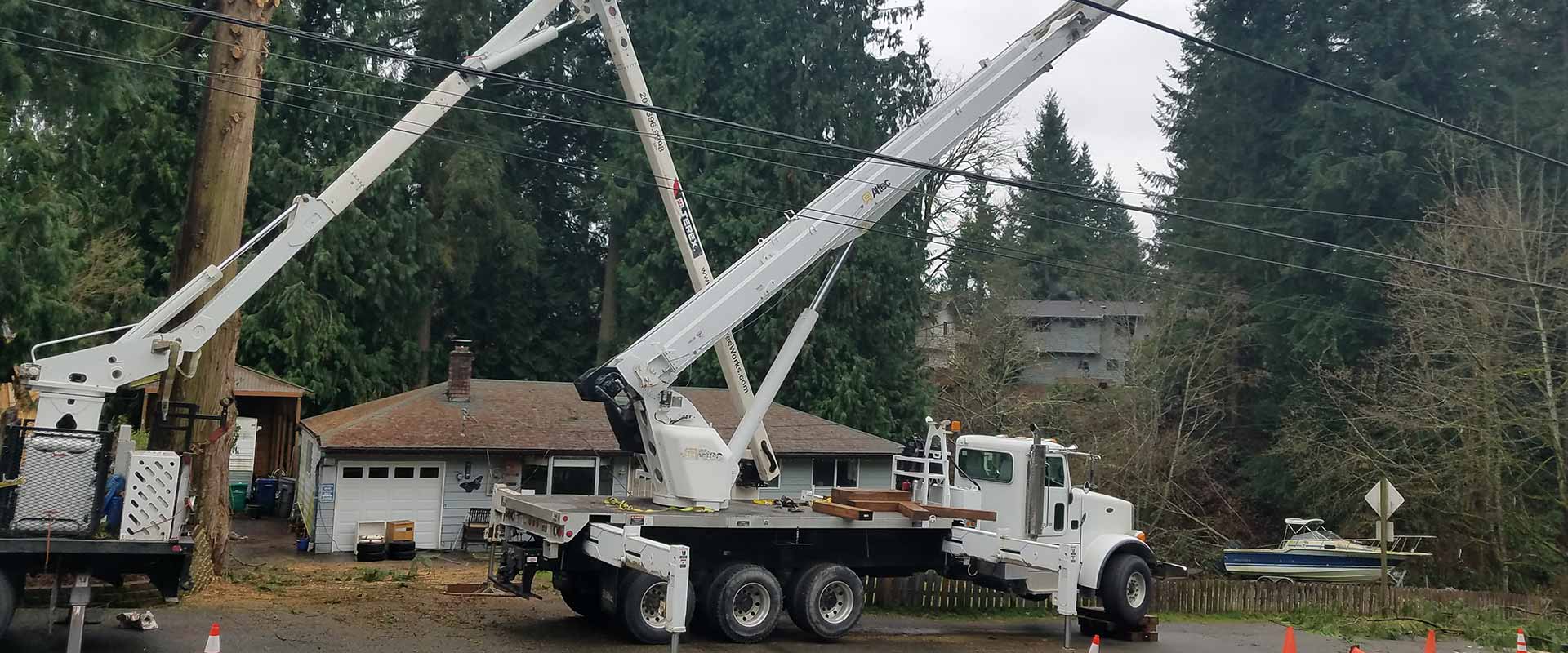Spotting tree risks is crucial as we enter the winter storm season with its high winds and heavy rains. While trees are an asset, they can also be a liability if not cared for properly.
Assessing tree risks
Every tree has the potential to topple and/or cause injury though only a small number cause damage by hitting a person or property. Our goal is to give you the right information so you can identify which trees are most likely to present problems thereby decreasing the chance of damage.
For example, trees near utility lines pose an especially serious threat that should not be taken lightly. In addition to falling and hurting people and/or damaging property, you have the added danger of power outages and fires.
Downed lines may still be live (conducting electricity) and it’s imperative that you call the power company ASAP. You (and everyone) need to stay away from the area until their team of professionals arrive to safely deal with it.
Who’s qualified to best assess risk?
Many ISA Certified Arborist on the Eastside Tree Works staff have an additional certification known as TRAQ (Tree Risk Assessment Qualification). This means they have completed a course on recognizing tree risks, appropriate protocols for dealing with the risks and implementing procedures to mitigate any risks.
Tree risk checklist
Spotting tree risks is easier when you answer these questions about the trees on your property.
- Does the tree have large dead branches?
- Any detached branches hanging in the tree?
- Are there cavities or rotten wood on the trunk or major branches?
- Are mushrooms growing at the base of the tree?
- See any cracks or splits in the trunk or branches?
- Have branches recently fallen from the tree?
- Have nearby trees toppled or died?
- Is the tree leaning?
- Do most of the main branches originate from 1 point on the trunk?
- Have the roots been damaged or broken off during sidewalk repairs or digging?
- Has the area around the tree been changed from construction or installing sod?
- Have the leaves developed an unusual color or size?
- Has the tree been topped or heavily pruned?
- Have nearby trees been removed?
Identifying defects in urban trees
Look for these defects or signs of possible defects in trees found in urban settings.
- Regrowth from topping, line clearance or other pruning
- Electrical lines near tree
- Dead/dying branches & broken or partially attached ones
- Open cavity in trunk or branches
- Branches coming from a single point on the trunk
- Decay/rot in old wounds
- Recent changes in soil level or construction
Defects in rural trees
If you live in a rural area, look for these indicators or possible defects that increase the risk of failure.
- Recent site construction, clearing of forests for development, grading & tree removal
- Previous tree failures nearby
- Tree leaning near a target
- Forked trunk with branches & stems equal in size
- Wet areas with shallow soil
Managing tree risk
If you have a tree (or trees) that have some of these indicators, we recommend consulting a Certified Arborist. The following are suggestions our arborists may give to manage risk and decrease failure.
While you can’t move your home or power lines, you can move other possible targets like tables, cars, and landscaping features (water fountains, bird baths, etc.). Pruning the tree of dead or dying branches and removal (if deemed that it’s a high risk).
Many times, providing routine care is the best course of action. For example, making sure the tree has proper water, nutrients and pruning to keep it strong and healthy will lower the risk of failure.
If you answered yes to any of the tree risk questions, please contact Eastside Tree Works. One of our ISA Certified Arborist will examine the tree(s) in question and offer you professional recommendations to lower your risk.

